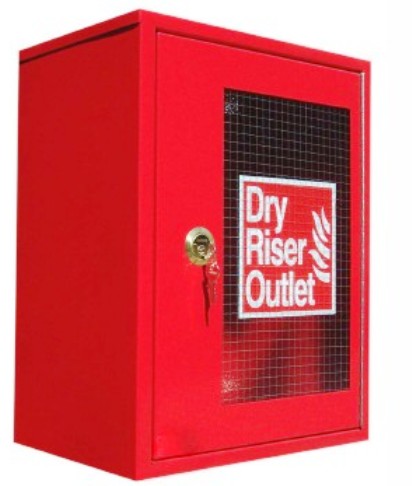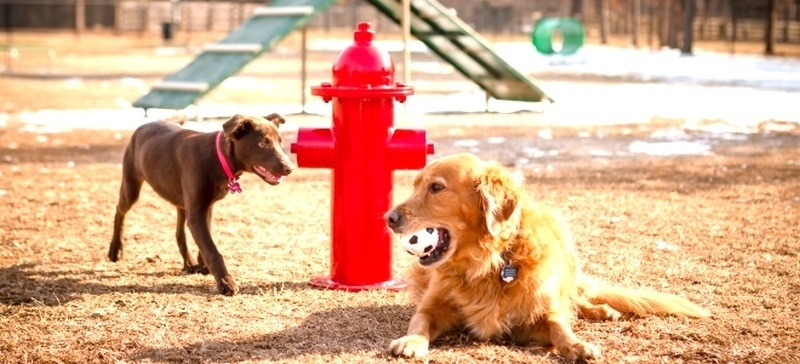Objectives:
Define “What is a fire hydrant”.
Describe the two types of Fire Hydrants.
Elaborate Fire Hydrants Design Locations installation, its parameters & Recognition.
Describe the Hydrant operation.
Describe the inspection and maintenance procedure of the Fire Hydrant.
Demonstrate fire hydrant operation, inspection, and maintenance.
What is the fire hydrant?
A Fire water hydrant system consists of a piping, distributed all around a facility with a high pressure pumping system, for the purpose to provide abundant and frequent water to firefighting.
- The water main is provided with a branch or T-piece to which the hydrant is attached either directly or short length of pipe inserted.
- The hydrant is situated in a chamber or pit of bricks work or other suitable material which is covered with a hinged lid, usually of cast iron.
Types of Hydrants:
There are two types of hydrants:
- Dry Riser Hydrants.
- Wet Riser Hydrants.
2.1 Dry Riser Hydrants:
- Dry barrel hydrants are used in climates where temperatures can be expected to fall
- The valve of the hydrant that controls the flow of the water into the barrel is located at the base of a hydrant, below the frost line to keep away the hydrant from freezing. Hydrant barrel after each use.
2.2 Wet Riser Hydrants:
- Wet barrel hydrants are used in locations where temperatures don’t drop below the freezing point.
- These hydrants always have water in the barrel and after each use.
Design, Location, parameters & Recognition:
3.1 Design of fire hydrant:
While selecting the design of fire hydrant, the following issues should be considered.
- How much water is needed for firefighting?
- How many____ are required?
- What_______ of hose connection is required?
- Current and future configuration of the fire apparatus.
- Issues of clearance and________.
- Operating characteristics of a hydrant.
- Pressure available in lines (How much).
- What are climate conditions?
- Hydrant outlet threads (Coupling) should meet regional standards for _______among all fire vehicles.
- Shape and access to the fire hydrant.
- ______ of valve and outlets should be clear and visible.
- Valves and outlets should be simple, and reliable to connect and operate.
- The discharge valve should be specified to open by turning counterclockwise and close by turning clockwise.
- Hydrant outlet threads (coupling) should meet the regional standards for _____ among all fire vehicles.
- Shape and access of the fire hydrant.
- ________of valve and outlets should be clear and visible.
- Valves and outlets should be simple and reliable to connect and operate.
- The discharge valve should be specified to open by turning counterclockwise and close by turning clockwise.
- 3.2 Location of Fire Hydrant:
- Standard practice for fire hydrant is to install at every _____Minor deviations in this space may be appropriate as per the situation.
- A sufficient number of hydrants should be provided for the required fire flow and high-hazard areas.
- Safe Minimum fire hydrant distance of fire hydrant should be from the protected/ involved structures.
- The competent authority of the fire wing/ department must be consulted to ensure the operational and practical issues, involved.
- Hydrants spacing should be_____should not create any obstruction.
- Hydrants’ proximity to structures is protected.
3.2 Location of Fire Hydrant:
- Standard practice for fire hydrant is to install at every _____Minor deviation in this space maybe
- appropriate as per the situation.
- A sufficient number of hydrants should be provided for the required fire flow and high-hazard areas.
- The safe minimum distance of the fire hydrant should be from the protected/ involved structures.
- The competent authority of the fire wing/ department must be consulted to ensure the operational and practical issues, involved.
- Hydrants spacing should be_____should not create any obstruction.
- Hydrants’ proximity to structures is protected.
- Fire hydrants must not be isolated by a fence, gate or obstruction.
- Fire hydrant parking of vehicles Should be at a safe distance from the hydrant.
- connected must not block critical access to Vehicles and hoses way.
- Walls, gates, and fences should appear on preliminary development plans and adjustments to the additional fire hydrant should be considered if these improvements affect the use of the proposed fire hydrant.
3.3 Hydrant Installation:
- Comparison and monitoring of Preliminary grading design final grading.
- Coordination among all parties involved at the building site in fire hydrant Installation details.
- Coordination with utility companies to ensure noninterference of utility poles, vaults, cabinets, sewerage lines and encroachments, etc.
- As a general rule, no equipment or facility should be within______of the fire hydrant body.
- Plants, walls, landscaping, and other materials must be kept_____the fire hydrant clearance space.
3.4 Installation Parameters:
- All hydrants must be of _____ with ______ delivery outlets and blanking caps for each outlet.
- The pressurized fire hydrant system shall be maintained at 3-5 bar pressure every time.
- Each delivery outlet must have instantaneous female coupling________diameter.
- Every delivery outlet should preferably have a separate shut-off- valve.
- The diameter of the main Hydrant line must be 4 inches (minimum). However, smaller diameter lines may be considered, if 4 inches diameter lines are not available.
- The main Hydrant line should preferably be metallic, however, if metallic lines are not available, PVC lines may be considered as an alternate.
- The main hydrant line must have an_______near the Fire Hydrant.
- A suitable draining mechanism for the hydrant should also be provided. Industrial areas, densely populated residential areas, High-rise buildings, Sensitive areas, and high-security Government Buildings may be selected for the suitable hydrant points.
- Commercial areas & busy markets must also be selected for a hydrant point.
- Narrow streets in old residential areas and commercial markets, where fire vehicle access is not possible, fire hydrants may be installed.
3.5 Fire Hydrant Recognition:
- Fire hydrants should be immediately recognizable to firefighting agencies and the general public.
- Standard color coding must be adopted throughout the region.
- According to NFPA, non-municipal hydrants can be painted a color that distinguishes them from municipal hydrants.
- Fire Hydrants must be marked with visible colors.
- An indication should be provided for permanently and temporarily non-operable Fire Hydrants.
Fire Hydrant Operation:
4.1 Turning On:
Firefighters must be proficient in operating A fire hydrant. These
steps should be considered while opening a hydrant;
- Remove the blanking cap from the outlet.
- Check that the remaining outlet blanking caps are snugly attached.
- Attach the hose to the hydrant outlet.
- Place the hydrant wrench on the stem nut (valve) and check the opening arrow direction.
- When instructed to do so by your officer or the pump operator, start the flow of water. Turn the wrench to fully open the valve.
- Open the hydrant slowly to avoid a pressure surge, once the flow of water has begun, you can open the valve more quickly.
4.2 Turning Off/ Shut Down a Hydrant:
- Turn the hydrant’s stem nut (valve) slowly with the wrench until the valve is closed.
- Slowly and carefully disconnect the hose from an outlet. Replace the hydrant’s outlet blanking cap.
- Replace the hydrant’s outlet’s blanking cap.
5. Inspection and Maintenance of Fire Hydrants:
5.1 inspection of A Hydrant:
- Hydrants should be checked physically & operationally.
- Frequently but at least once a year.
- Valves, blanking caps, couplings, main stop valves & mainline must be checked periodically.
- Hydrant should not be hidden by tall grass, brush, fences, debris, or any other obstruction.
- Check and ensure that all blanking caps are present.
- All the inspection records of every periodical inspection must be documented.
5.2 Maintenance of a Hydrant:
- Check the gaskets in the caps to make sure they are not cracked, broken or missed; if broken, replace them with a new one.
- Lubricate any part of the hydrant if necessary or rusted.
- All the valves, delivery valve, main stem nut valve, and mainline valve must be repaired or replaced if broken, cracked, missing, or rusted.

John Doe, a seasoned firefighter, shares his vast knowledge of fire safety and emergency preparedness at arescuer.com, aiming to empower and educate




Fantastic comprehensive guide on fire hydrants! Your breakdown of the different types, designs, and key parameters is incredibly informative. The emphasis on inspection and maintenance is crucial for ensuring reliability during emergencies. Thanks for sharing this valuable resource—it’s essential for anyone involved in fire safety!